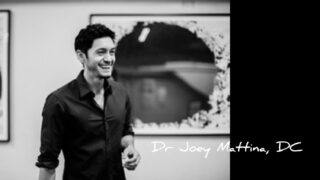Book Review: “Healing Back Pain” by Dr. John Sarno
“Healing Back Pain” delves deep into the world of psychosomatic medicine, with Dr. John Sarno meticulously weaving the tapestry of our emotional and psychological selves in relation to physical pain. With rigorous attention to medical and scientific detail, yet presented in an accessible manner, the book challenges traditional notions of back pain treatment. As you traverse the pages, three central tenets crystallize, reshaping how we perceive and address back pain.
1. The Concept of TMS (Tension Myositis Syndrome):
Arguably the cornerstone of Dr. Sarno’s thesis, TMS postulates that much of the persistent back pain experienced by people has its roots not in the structural anomalies (like herniated discs or pinched nerves) but rather in repressed emotions, notably anger and anxiety. The pain serves as a distraction from these unresolved emotions. Dr. Sarno posits that the pain is real, but it originates from oxygen deprivation caused by the autonomic nervous system restricting blood flow as a protective response. This bold assertion beckons readers to reflect inwardly, reassessing the causes of their back pain. For many, this introspection can be an unsettling yet transformative journey, as they reconcile with deep-seated emotions that they might not have acknowledged before.
2. The Role of Society and Conditioning:
Dr. Sarno delves into the societal pressure and conditioning that exacerbates, if not creates, the conditions for TMS to thrive. He underscores the modern-day demands to be incessantly productive, to suppress emotions in favor of rationality, and the societal expectations that influence our self-worth. By mapping out this social landscape, Sarno paints a picture of an environment that is a breeding ground for repressed emotions. This revelation is a call to action for readers to become more self-aware, to challenge societal norms, and to prioritize emotional health and introspection.
3. The Healing Process:
Merely understanding TMS doesn’t alleviate the pain; one must actively engage in the healing process. Dr. Sarno outlines a therapeutic pathway that is refreshingly free of surgeries, drugs, or extensive physical therapies. He emphasizes the importance of acknowledging the psychological origins of pain, educating oneself about TMS, and most critically, confronting and addressing repressed emotions. Regular introspection, journaling, and occasionally seeking psychotherapy are encouraged. The process is demanding, requiring genuine self-examination and acceptance, but the rewards—a pain-free life rooted in emotional balance—are well worth the endeavor.
In essence, “Healing Back Pain” is more than just a book about back pain; it’s a manifesto on the interconnectedness of the mind and body. Dr. Sarno, with compelling anecdotes and clinical evidence, invites readers on a transformative journey towards holistic well-being. While the book might be met with skepticism by staunch proponents of traditional medicine, those willing to entertain its concepts might just find the answers they’ve been searching for.
Yours in Health,
Joey
